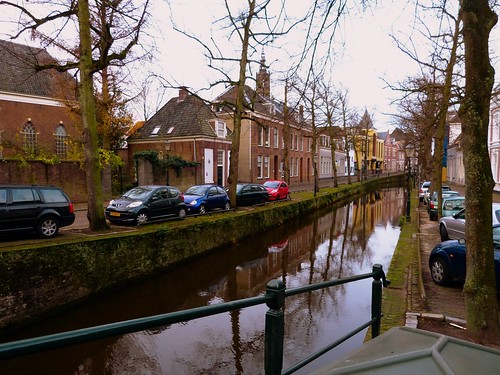Most national governments of Western countries aim to influence the travel patterns of households – at least to some degree – through the spatial planning of residential areas. Over time and between countries, the main aims of spatial policies have varied, from reducing congestion, reducing travel times, reducing environmental pollution, increasing liveability to preserving rural landscapes. Today, maintaining and improving accessibility for economic reasons, the depletion of fossil fuels and the reduction of carbon dioxide emissions to limit climate change are the major reasons for influencing travel behaviour (e.g. Hilbers et al., 2006; OECD, 2007; TRB, 2003; Van den Brink and Van Wee, 2001). In addition, health professionals have recently called on spatial planners to develop residential areas that promote walking and cycling (e.g. Frumkin et al., 2004; NICE, 2008).
Nonetheless, in most countries the extent to which policies are put into practice is limited. Over the last few decades, the Netherlands has probably had the most far-reaching mobility aims in its spatial planning policies. In the 1970s the Third National Policy Document on Spatial Planning aimed at reducing car mobility. Policies aimed to increase the use of slow modes and public transport through undertaking new developments in existing urban areas, providing high-quality public transport in the newly developed areas andmixed land use (housing, work and recreation) at the urban regional level. New employment locations were to be situated near railway stations. In 1973 the national government prohibited large-scale out-of-town retail developments to protect city centres and prevent an increase in car use (Evers, 2002).
Spatial policy aiming at urban concentration was intensified in the following two decades, with the introduction of the compact city policy. The Fourth Report on Spatial Planning Extra (Ministerie van Volkshuisvesting, Ruimtelijke Ordening en Milieubeheer, 1991) resulted in the development of so-called VINEX locations. These are large new residential areas situated within or adjacent to medium to large-sized cities, aiming to provide good accessibility by public transport and bicycle. Living, working and personal care was to take place at the level of the urban region to reduce mobility and protect rural areas (Snellen and Hilbers, 2007).
Nonetheless, in most countries the extent to which policies are put into practice is limited. Over the last few decades, the Netherlands has probably had the most far-reaching mobility aims in its spatial planning policies. In the 1970s the Third National Policy Document on Spatial Planning aimed at reducing car mobility. Policies aimed to increase the use of slow modes and public transport through undertaking new developments in existing urban areas, providing high-quality public transport in the newly developed areas andmixed land use (housing, work and recreation) at the urban regional level. New employment locations were to be situated near railway stations. In 1973 the national government prohibited large-scale out-of-town retail developments to protect city centres and prevent an increase in car use (Evers, 2002).
Spatial policy aiming at urban concentration was intensified in the following two decades, with the introduction of the compact city policy. The Fourth Report on Spatial Planning Extra (Ministerie van Volkshuisvesting, Ruimtelijke Ordening en Milieubeheer, 1991) resulted in the development of so-called VINEX locations. These are large new residential areas situated within or adjacent to medium to large-sized cities, aiming to provide good accessibility by public transport and bicycle. Living, working and personal care was to take place at the level of the urban region to reduce mobility and protect rural areas (Snellen and Hilbers, 2007).
 |
| Amersfoort, Netherlands |
 |
| Amersfoort, Netherlands |
more about travel behavior:
No comments:
Post a Comment